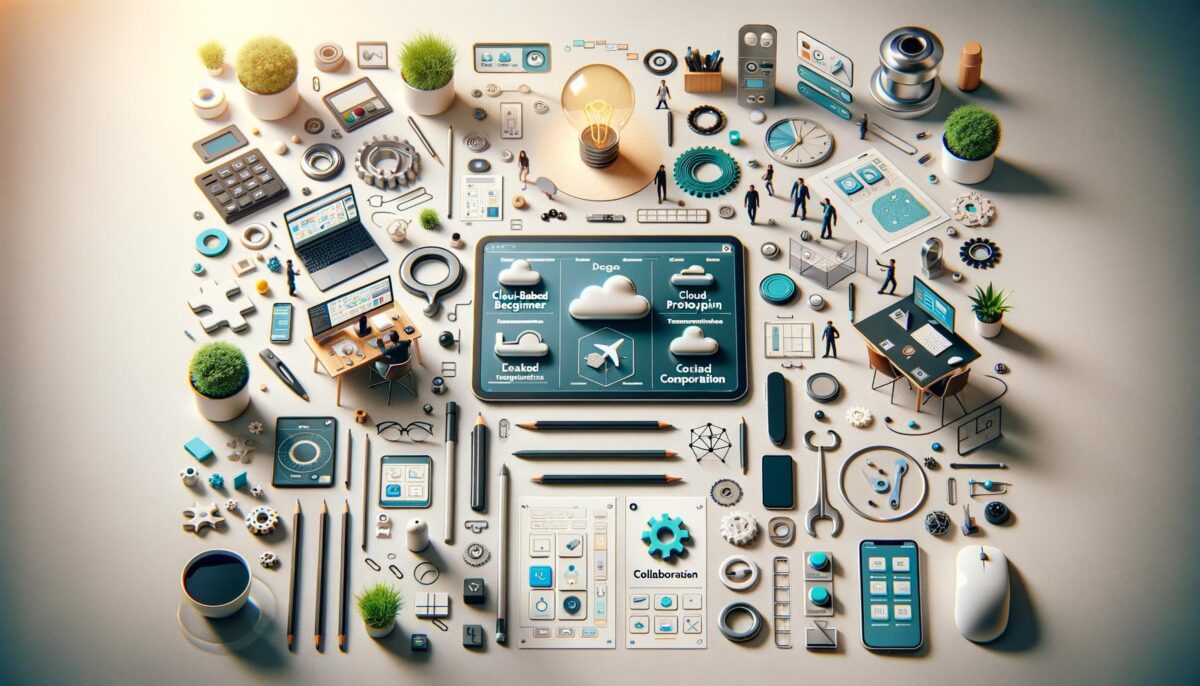Introduction to UI/UX Design Tools
Choosing the right design tool is crucial for any team or individual aiming to streamline their UI/UX design process. With an array of options available, it’s essential to select tools that offer robust features, especially cloud-based prototyping and collaboration capabilities. These features allow for real-time updates and feedback, effectively bridging the gap between designers and stakeholders. Whether you’re just starting or an experienced professional, finding a tool that balances usability and advanced features is key to producing outstanding results.
Cloud-Based Prototyping Features
Cloud-based prototyping has revolutionized the way design teams work, providing a platform where ideas can be quickly visualized and shared. The flexibility offered by cloud solutions ensures that team members can access projects from anywhere, increasing efficiency and productivity. Key benefits of cloud-based prototyping include:
- Real-time collaboration enabling multiple users to work simultaneously on a project.
- Version control simplifies tracking changes and reverting to earlier design stages if needed.
- Integrated tools that support both low-fidelity and high-fidelity prototyping, allowing for a broad design spectrum.
These features make cloud-based tools an indispensable part of modern design workflows, particularly for remote teams.
Collaboration Features to Enhance Teamwork
Collaboration is at the heart of UI/UX design, especially in a team setting. Tools that facilitate easy communication and feedback between designers, developers, and clients are immensely valuable. Many modern UI/UX design tools come equipped with features that support effective collaboration, such as:
- Commenting capabilities within design files that make feedback accessible and organized.
- Integration with project management and communication platforms to maintain workflow continuity.
- User permission settings to control access to sensitive information.
These features not only speed up the design process but also reduce the chances of miscommunication, ensuring that everyone involved is on the same page.
Top Options for Beginners
For beginners, selecting the right UI/UX design tool can make the learning curve less steep. Many tools offer intuitive interfaces and guides that allow new users to learn effectively. Some features to look for include:
- Drag-and-drop functionality that simplifies the design process.
- A comprehensive library of templates and assets to jumpstart creativity.
- Resource centers and community forums for troubleshooting and inspiration.
These tools allow beginners to experiment with design concepts without feeling overwhelmed by complex features, providing a solid foundation for learning and development.
Options for Professional Teams
Professional design teams require tools that support complex workflows and provide robust features to handle large projects. Key features for professional-grade tools include:
- Scalability to manage extensive design systems and libraries.
- Advanced prototyping and testing capabilities to ensure designs meet user expectations.
- Comprehensive integration options with other software and platforms used in the development pipeline.
These tools often come with a higher learning curve, but the enhanced functionality supports teams in creating refined, intricate designs.
Conclusion
Choosing the right UI/UX design tools is a pivotal decision for both teams and individual designers. The right tool not only enhances the design process but also fosters collaboration and innovation. Beginners should focus on tools that are easy to start with, while professional teams might prioritize advanced features that support scalability and integration. In today’s digital era, cloud-based tools with robust collaboration features can significantly elevate the quality and efficiency of design projects, making them a valuable investment for any design team.
